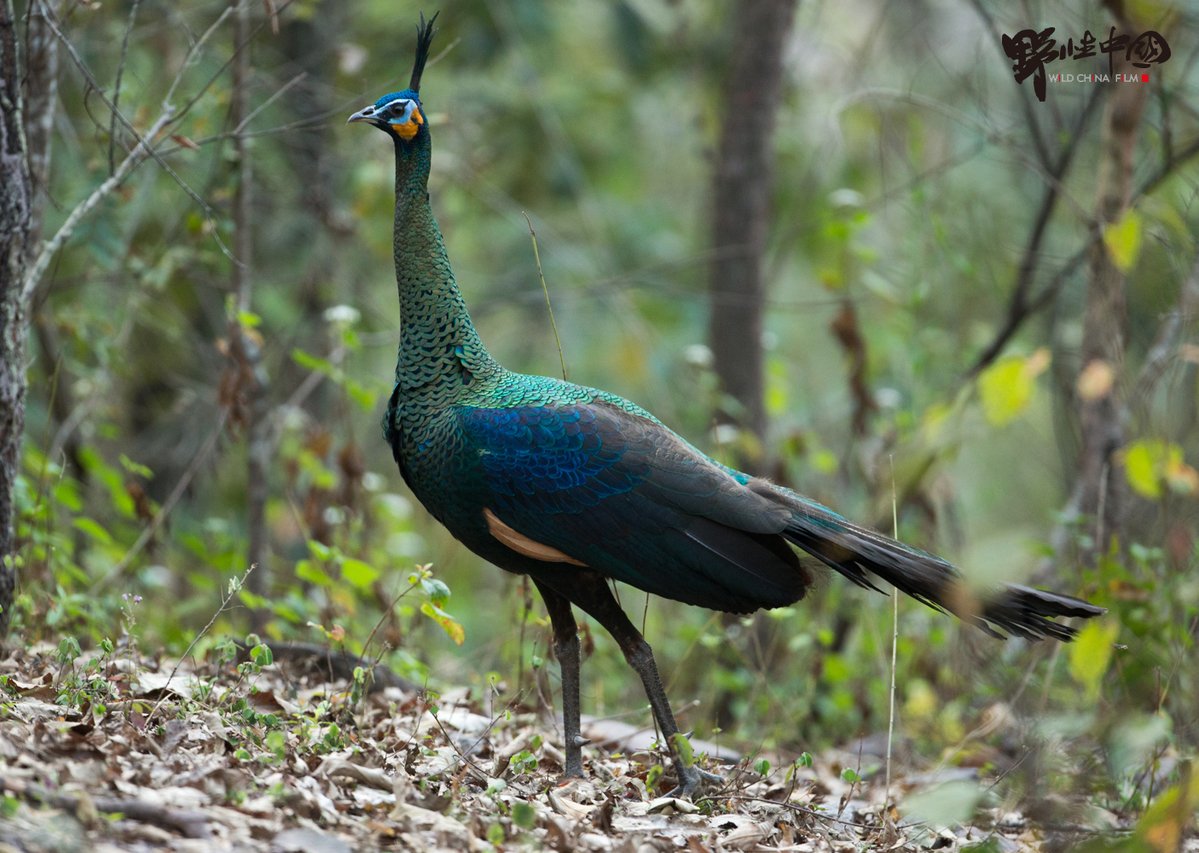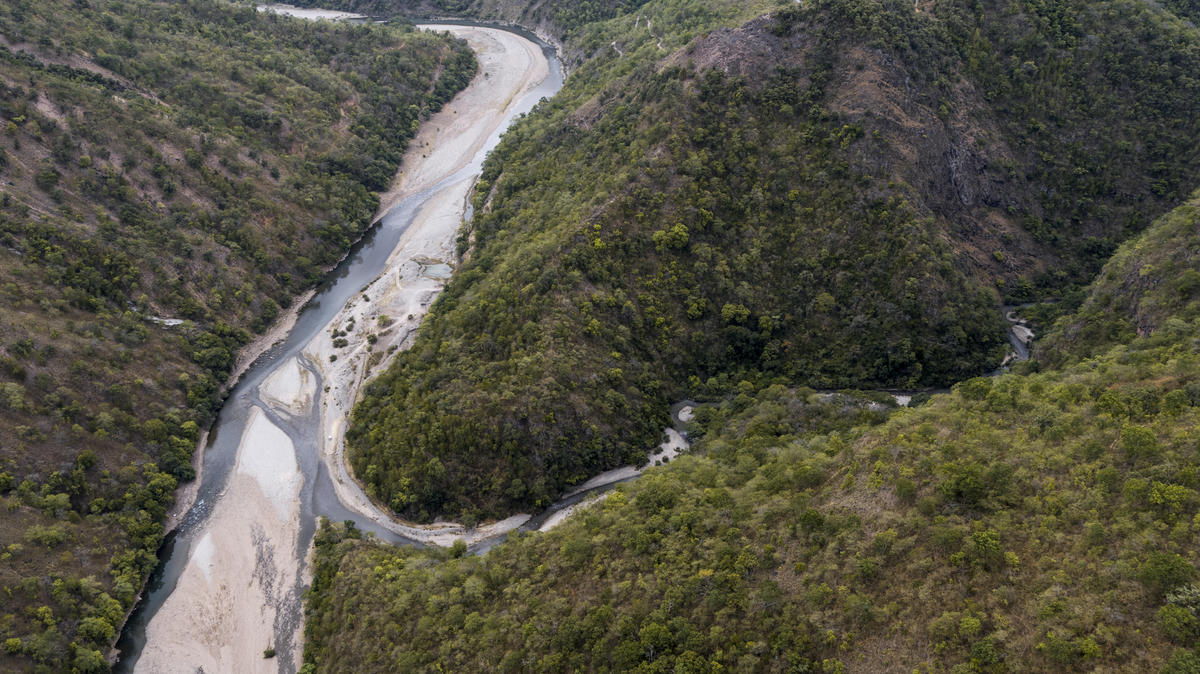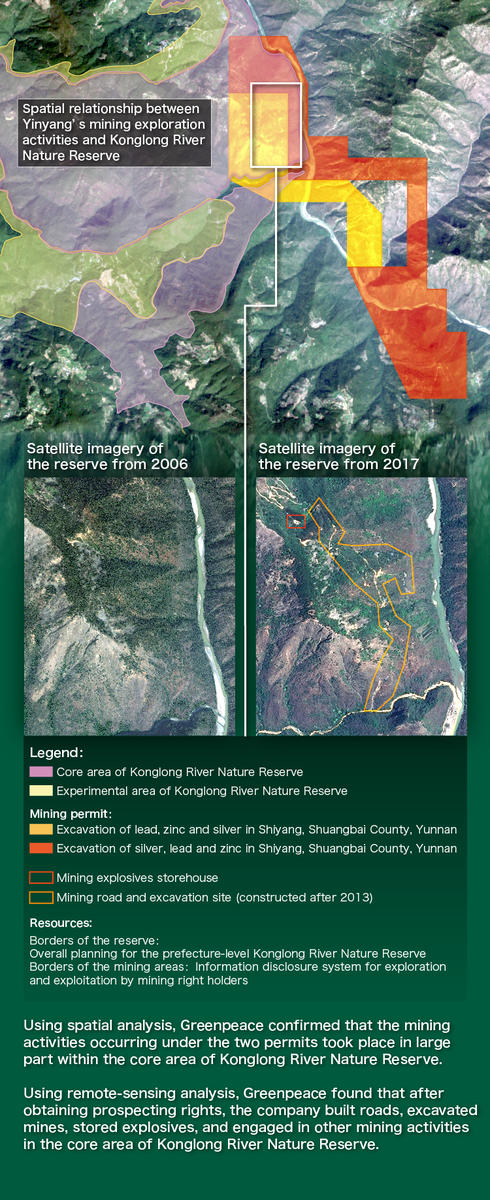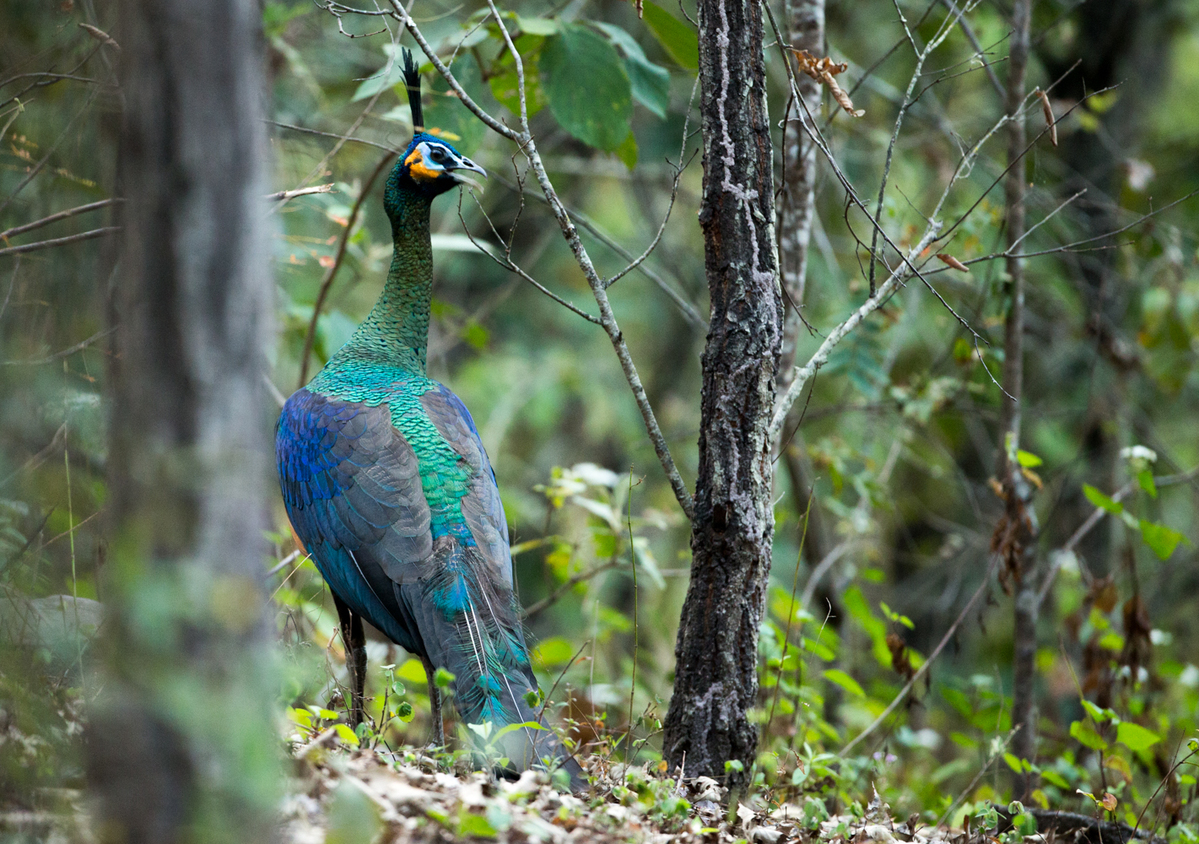
Wild Green Peafowl, Xiaojiang River Valley, Yunnan, China.
There are fewer than 500 green peafowls left in the wild in China.
On Monday, we got news that all three of our demands for the protection of China’s endangered green peafowl would be met.
- Halt illegal mining and dam activities inside the Konglong River Nature Reserve.
- Assess the green peafowl’s habitat.
- Include the green peafowl’s habitat in its draft version of Yunnan’s ecological protection boundaries, or “ecological red lines.”
This is a triple win for the green peafowl, and one that is a direct result of collaboration among the environmental community.
In March of this year, wildlife photographer and conservationist Xi Zhinong found that dam construction in the Red River Basin was threatening China’s already shrinking green peafowl habitat.
Although the green peafowl was once found throughout Yunnan province, only an estimated 500 of the birds remain in the wild in China.
Throughout the spring, environmental NGOs Friends of Nature, Shanshui Conservation Centre and Xi’s organization, Wild China Film, worked to draw attention to threats to the peafowl’s habitat. Friends of Nature sponsored a series of billboards about the bird in the Beijing subway, and the peafowl received substantial coverage in China’s domestic media.
Public awareness of the issue grew.
Between April and June, Greenpeace East Asia used satellite data and field research to map the peafowl’s habitat. We found that illegal mining and roads had cut through the core of the nature reserve and used spatial analysis to show how a nearby dam was on track to flood the peafowl’s habitat.
We released our findings on July 12 and shared them with relevant government departments on both the national and local level.

Aerial view of China’s last remaining Green Peafowl habitat
In June 2017, Greenpeace East Asia uncovered illegal mining in the habitat of China’s last remaining green peafowl. The green peafowl’s population in China has fallen to less than 500, and it is listed as an IUCN Red List endangered species. The mine is located in the core zone of Konglong River Nature reserve in Shuangbai County, Yunnan Province. Outside the reserve, hydropower facilities and agriculture also threaten the green peafowl’s habitat.

Greenpeace used satellite imagery to analyse damage to the green peafowl’s habitat.
Then the good news came. On Monday, we received a letter from Yunnan’s Environmental Protection Agency stating that our three demands for the green peafowl’s habitat would be met.
This shows what is possible when NGOs, media and the public come together to call attention to habitat destruction.
But more work will need to be done to ensure the green peafowl’s survival in China.
It’s crucial that ecological protection zones include all habitats and corridors between isolated populations, regardless of current natural reserve borders and administrative divisions. All green peafowl populations must be thoroughly mapped.
On a larger scale, we hope that the green peafowl story can provide a case study for local governments throughout China.
We see it as a prime example of how ecological boundaries can protect endangered species and natural ecosystems for years to come.

Wild Green Peafowl, Xiaojiang River Valley, Yunnan, China.
An image of China’s last remaining green peafowl habitat in Jiasa, Yunnan province, China.
Yi Lan Senior Forests Campaigner for Greenpeace East Asia in Beijing



